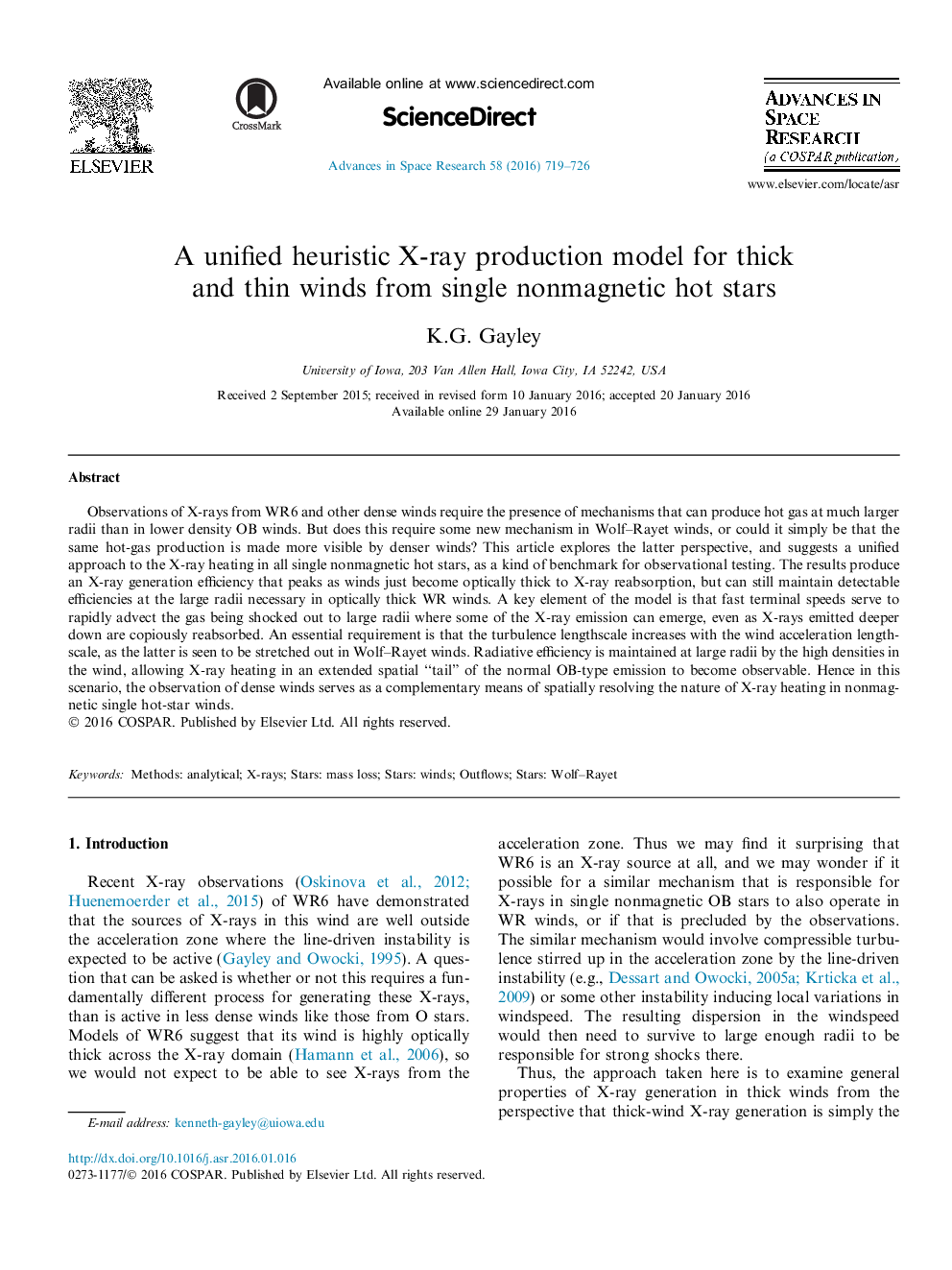| کد مقاله | کد نشریه | سال انتشار | مقاله انگلیسی | نسخه تمام متن |
|---|---|---|---|---|
| 1763249 | 1019991 | 2016 | 8 صفحه PDF | دانلود رایگان |
Observations of X-rays from WR6 and other dense winds require the presence of mechanisms that can produce hot gas at much larger radii than in lower density OB winds. But does this require some new mechanism in Wolf–Rayet winds, or could it simply be that the same hot-gas production is made more visible by denser winds? This article explores the latter perspective, and suggests a unified approach to the X-ray heating in all single nonmagnetic hot stars, as a kind of benchmark for observational testing. The results produce an X-ray generation efficiency that peaks as winds just become optically thick to X-ray reabsorption, but can still maintain detectable efficiencies at the large radii necessary in optically thick WR winds. A key element of the model is that fast terminal speeds serve to rapidly advect the gas being shocked out to large radii where some of the X-ray emission can emerge, even as X-rays emitted deeper down are copiously reabsorbed. An essential requirement is that the turbulence lengthscale increases with the wind acceleration lengthscale, as the latter is seen to be stretched out in Wolf–Rayet winds. Radiative efficiency is maintained at large radii by the high densities in the wind, allowing X-ray heating in an extended spatial “tail” of the normal OB-type emission to become observable. Hence in this scenario, the observation of dense winds serves as a complementary means of spatially resolving the nature of X-ray heating in nonmagnetic single hot-star winds.
Journal: Advances in Space Research - Volume 58, Issue 5, 1 September 2016, Pages 719–726
